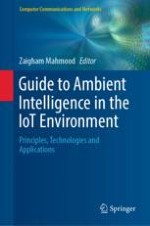2019 | OriginalPaper | Chapter
4. Runtime Adaptability of Ambient Intelligence Systems Based on Component-Oriented Approach
Authors : Muhammed Cagri Kaya, Alperen Eroglu, Alper Karamanlioglu, Ertan Onur, Bedir Tekinerdogan, Ali H. Dogru
Published in: Guide to Ambient Intelligence in the IoT Environment
Publisher: Springer International Publishing
Activate our intelligent search to find suitable subject content or patents.
Select sections of text to find matching patents with Artificial Intelligence. powered by
Select sections of text to find additional relevant content using AI-assisted search. powered by
